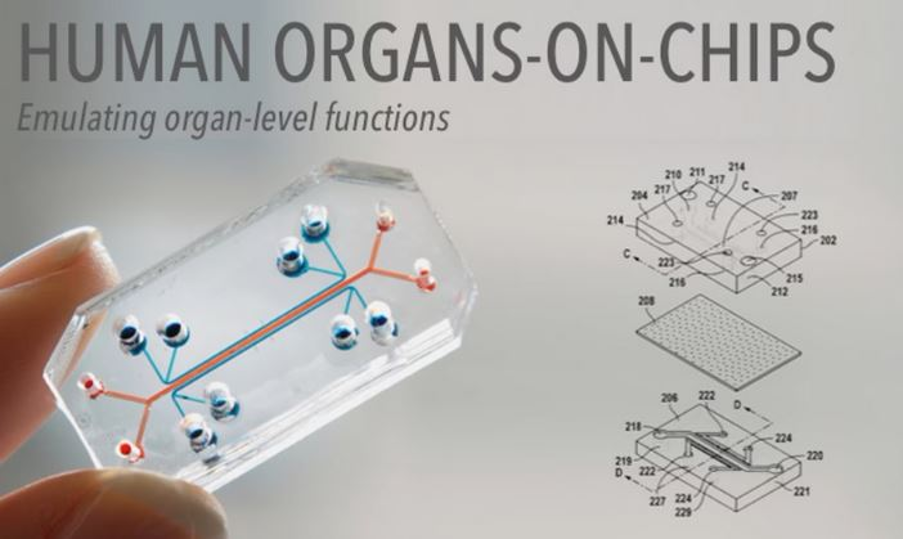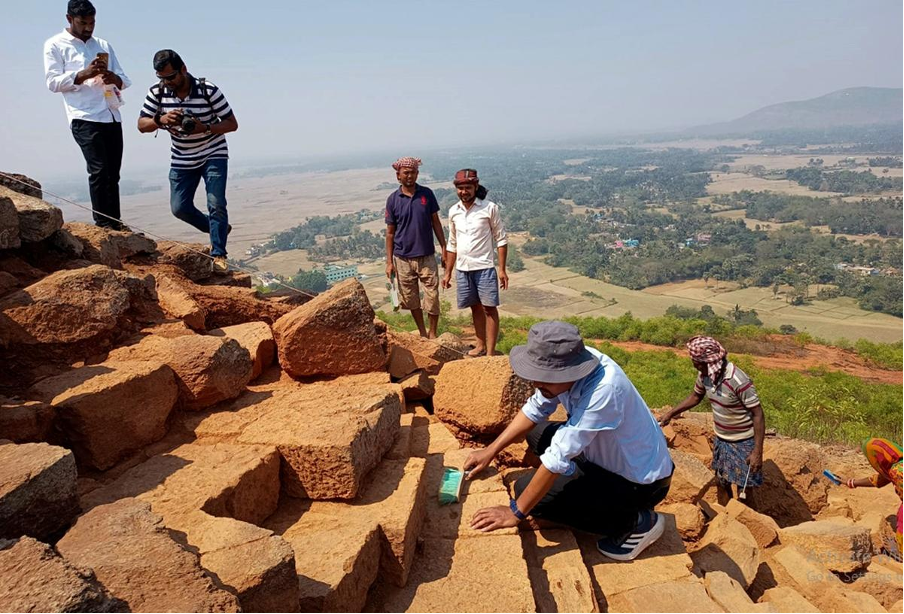Current Affairs 1 March 2023

Current Account Deficit (CAD): Desirable and Undesirable Components
GS Paper II
Context: According to the RBI's quarterly figures, the current account deficit (CAD) increased from 2.2% of GDP in the first quarter of 2022–23 to 4.4% in the second. This is a change from an extraordinary surplus of 0.9% of GDP in 2020–21. As the merchandise trade imbalance has increased, the CAD may decline in the third quarter of current fiscal year.

What is Current Account Deficit?
Current Account Deficit = Trade Deficit + Net Income + Net Transfers
The balance of payments, which is the accounting of exchanges or transactions between entities in a nation and the rest of the world, includes a current account as a crucial element.
Included in this are a country's net commerce in goods and services, net earnings from international investments, such as interest and dividends, and net transfer payments, including remittances and foreign aid.
While the trade balance refers to the net balance of exports and imports of products or merchandise commerce, a current account deficit occurs when the value of goods and services imported exceeds the value of exports.
Components of Current Account:
Trade Deficit:
Trade Deficit = Imports – Exports
When a nation buys more products and services than it exports, it is said to have a trade imbalance.
A negative balance of trade in which a nation's imports exceed its exports is known as a "trade deficit."
An outflow of local cash to foreign markets is the definition of a trade deficit.
Net Income:
Net Income = Income Earned by MNCs from their investments in India.
The country has a net income imbalance when the money from foreign investments is more than what the citizens have saved.
Payments provided to foreigners in the form of dividends on domestic equities, interest payments on bonds, and wages paid to foreign nationals working in the nation are used to calculate net income.
Net Transfers:
Residents in other countries can send money home through net transfers. It also includes foreigners' grants from the government. It also includes donations, gifts, and remittances.
India’s Current Account Deficit have both desirable and undesirable components:
Desirable:
A desired deficit is a logical result of increasing investment, portfolio decisions, and national demographics.
Current Account Deficits are preferable if they can be covered by consistent capital inflows, such as FDI inflows, as they are less susceptible to capital flight.
Steady capital flows are preferred because they enable debtor nations like India to use and allocate funds to industries with the potential to boost long-term productivity and economic growth.
Undesirable:
If they are backed by unstable financing and represent larger issues like weak export competitiveness, large and persistent CADs may not be desired.
There may be cause for worry if volatile capital flows, such as portfolio movements, are used to support deficits. In the event of a global financial crisis, portfolio movements are unpredictable and more prone to reversals.
Challanges:
Dominant of external shocks: According to research, when output declines, rather than when demand increases, the country's CAD rises, demonstrating the dominance of external shocks.
For illustration: As oil is a production input, rising oil prices increase production costs, which in turn slow down economic growth. Due to the inelastic demand for oil imports in this situation as well as its significant percentage of India's total imports, CADs increase along with declining GDP.
The makeup of the funding is quite important. While FDI inflows were sufficient to cover the deficit in 2021–2022, they have proved insufficient for the present fiscal year.
Policymakers must stop the detrimental effects of the downturn in global commerce on exports of goods in the medium run.
If the US Fed raises rates more, there may be a capital flight, which would put further pressure on the exchange rate market. This might be difficult given the present economic climate, as an unstable import basket and a weakened currency will result in imported inflation.
Hence, policy actions must promote exports by concentrating on structural changes to increase trade competitiveness, and the government must sign free trade agreements at the same time.
Conclusion:
High budget and current account deficits are the two deficit issues that India is now dealing with. Aggressive fiscal austerity may not be desired in the face of growing concerns about a global downturn, but by providing stable finance and using exchange rates as a shock absorber to weather the challenging global economic climate, a pleasant external environment may be maintained.
Source: The Hindu
E-waste rules and the critical issues
GS Paper III
Context: In a time of increased urbanisation, digitalization, and population expansion, the problem of managing e-waste is a cross-cutting and ongoing concern. A new set of e-waste regulations were announced by the Ministry of Environment and Forestry in November 2022 and will take effect on April 1st, 2023. Some of the important concerns are covered by these regulations, but others are not.

What is E-Waste?
E-waste, also known as electronic garbage, is any electrical or electronic gadget that has been abandoned, including computers, smartphones, televisions, and refrigerators.
If not properly disposed of, these devices' toxic constituents, including lead, mercury, cadmium, and polyvinyl chloride (PVC), can pose serious dangers to both the environment and human health.
Key components of e-waste Rules in India:
The first set of e-waste Guidelines was announced in 2011 and went into force in 2012. Extended Producer Responsibility (EPR): The Rules (2011) included the adoption of EPR as a key element. When a consumer discards an electronic or electric goods, the maker is liable for the device's safe disposal under EPR compliance.
Authorization and product stewardship: The comprehensive E-waste Rules of 2016, as revised in 2018, includes measures to encourage authorisation and product stewardship. These guidelines also included the introduction of other stakeholder groups, such as Producer Responsibility Organizations (PRO).
a strategy for digitalized systems that is included in the new regulations (2022): Standardizing the e-waste value chain through a shared digital platform may assure transparency and is essential to lowering the incidence of paper trade or fake trail, which is a technique of falsifying 100% collection on paper while gathering and/or weighing garbage to achieve objectives.
E-waste recycling:
Component recovery (sufficient and effective recoveries of rare earth metals to decrease dependency on virgin resources) and residue disposal are two crucial steps in effective e-waste recycling (safe disposal of the leftover residual during e-waste recycling).
The revised notice eliminates PRO and dismantlers: Authorized recyclers are solely in charge of recycling; they must collect a certain amount of trash, recycle it, and create digital certificates using the portal.
Underrecognition of the informal sector The informal sector, which manages 95% of the nation's e-waste, plays a significant role that is not acknowledged by the current guidelines for managing e-waste in India. The industry's "illegality" may be the cause of this lack of recognition.
Impact on Health:
Open incineration and acid leaching, which are frequently utilised by unorganised labour, have a negative influence on the environment and pose major health hazards, particularly to the lungs, kidneys, and general well-being of children and pregnant women.
Occupational health risks: Many of these unskilled workers in India who come from disadvantaged and marginalised backgrounds are unaware of the extent to which what they refer to as "black plastics" pose occupational health risks, particularly when they are burned to extract copper and other valuable metals for their market value.
Children's Exposures: According to a global conference on chemical treaties, the "tsunami of e-waste rolling out of the world" creates a number of health risks for women working in this field since they are frequently exposed to children and leftover dangerous substances in their own homes.
Continuous exposure to organic pollutants: A new WHO research estimates that every year in low- and middle-income countries, 18 million children, some as young as five, work alongside their families at e-waste dumpsites. Lead and other heavy metals, as well as POPs like dioxins and flame retardants (PBDEs) that were discharged into the environment, have all contributed to pollution of the air, soil, and water.
Way Forward:
The operations of the recyclers must be tracked in the system to guarantee optimal efficiency.
The amount of e-waste that was sent for recycling and the amount that was recovered at the end should be monitored by the authorities on a regular basis.
recognising the potential of the unorganised sector in processing e-waste.
For instance, the informal aggregators are part of the collecting process at the Delhi-based PRO "Karo Sambhav". The informal sector benefits from this project in terms of financial and legal security, and e-waste is incorporated into a secure and organised system.
Stakeholders must have the necessary knowledge and motivation to securely dispose of e-waste in order to guarantee the effective execution of the law.
Reverse logistics must be strengthened, stakeholder capacity must be increased, infrastructure must be improved, product design must be improved, input control must be rationalised, and green procurement methods must be used.
Offer customers with doorstep collection.
Conclusion:
The management and recycling of e-waste has emerged as a significant environmental concern in the modern day as the amount of e-waste created keeps increasing quickly. E-waste management requires coordinated efforts to raise awareness and upgrade infrastructure. Moreover, a strong recycling and collecting system is necessary to comply with legal standards.
Source: The Hindu
Ethical Animal Research: Prospects and Challenges
GS Paper IV
Context: Switzerland was considering a law that would have made it the first nation to outlaw animal testing for both medicinal and scientific purposes.

What counts as ‘Ethical’ animal research?
Animal research that is ethical cannot be defined in a single, universal manner.
The use of animals in scientific study while ensuring that they are treated humanely and that their welfare is respected is referred to as ethical animal research.
It entails weighing the advantages of the research against any potential harm to the animals and limiting any suffering or injury that they could endure.
Issues involved in animal research:
Animal mistreatment: Throughout the study process, particularly during transit, housing, and experimental treatments, animals are frequently not treated appropriately and are handled improperly.
Advocates for animal rights contend that since animals have intrinsic rights, humans should not exploit them. They contend that employing animals for research breaches the rights of animals to life, liberty, and freedom from pain.
Animal distress: We should take into account the needs of animals. It is presumed that everything that is unpleasant in humans would also be painful in animals.
The 4 R’s of animal research:
The 3 R’s encourage scientists to develop new techniques that allow them to replace animals with appropriate alternatives. The principles are summarized as:
Reduction
Refinement
Replacement
Rehabilitation
Guidelines for animal research:
The use and treatment of animals in research are assessed using guiding principles by federal research organisations.
Empathy for all: One need for research is that it must advance knowledge and, either directly or indirectly, have the potential to improve both human and animal health and welfare.
Another is that just the bare minimum of animals needed to produce reliable findings should be included.
Reduce suffering: While doing research on animals, care must be taken to reduce suffering and maximise welfare.
Employing computer simulations or mathematical models rather than actual animals is another option that they are asked to examine.
Significance of such guidelines:
They have ensured that researchers develop protocols outlining their study's objectives and the rationale for using animals in order to provide relevant answers.
To guarantee that anyone handling and working with the animals are educated to treat them properly, the procedure must specify how animals will be kept, cared for, and handled.
Why is animal research essential?
Animal research is non-invasive and beneficial to both people and animals. Many medical advancements have been made as a result of initial animal testing.
Advantages for all wildlife: The elimination of some illnesses in cattle, for instance, made it possible to enhance the health of wild cattle in addition to reducing farm cow fatalities and human starvation.
Veterinary care: Because to animal research, improvements in pet health care, such as cancer therapies, efficient immunisations, nutrient-rich prescription foods, and flea and tick treatments, are also possible.
Way Forward:
Governments at the national level often adopt specific regulations for moral animal research.
Research standards are also offered by independent organisations.
Establish a committee for institutional animal care and use.
Source: Indian Express
Organ on a chip: New setup for lab testing
GS Paper III
Context: In place of employing animals in the lab, scientists are now testing novel treatments using organ-on-a-chip technology.

What is Organ-on-a-Chip?
A microfluidic device called a "Organ-on-a-Chip" tries to in vitro imitate the composition and operation of certain human organs or tissues.
It is a tiny, transparent chip lined with live cells that is constructed from biocompatible materials like silicon, glass, or polymers.
Living cells that may be cultivated to mimic the milieu of the particular organ being mimicked are sourced from human tissues.
How does Organ-on-a-Chip work?
Each organ-on-a-chip has a sophisticated network of microfluidic channels and chambers that can mimic the physical and chemical conditions of a particular organ.
Mimics blood flow: Living cells offer a realistic setting for drug testing and illness modelling, while microfluidic tubes may simulate the flow of blood and air.
Potential applications of organ-on-a-chip:
Several potential uses for organ-on-a-chip technology exist, including toxicity testing, disease modelling, and medication discovery.
Researchers can explore how organs react to medications and other substances by simulating their structure and functionality.
This may result in the creation of more effective and individualised therapies for a range of illnesses.
Moreover, organ-on-a-chip technology reduces the need for animal testing by offering a more moral and efficient method of evaluating pharmaceuticals and other substances.
Examples of Organ-on-a-Chip:
Organ-on-a-chip technology has been created in a number of ways, including-
The air-blood interface in the lungs is modelled by Lung-on-a-Chip.
The mechanical and electrical characteristics of the heart are modelled by heart-on-a-chip.
The liver's metabolic processes are simulated via liver-on-a-chip technology.
The blood-brain barrier and neuronal activity in the brain are modelled using brain-on-a-chip technology.
Way Forward:
The exciting and quickly developing area of organ-on-a-chip technology has several benefits over conventional approaches to drug research and testing.
It lessens the need for animal testing by providing a more moral and efficient method of evaluating medications and other substances.
Also, by making it possible for more individualised and efficient therapies for a range of disorders, it has the potential to transform the area of drug creation.
Source: Indian Express
National Flagship Programmes for Fisheries
GS Paper II
Context: Three national flagship programmes for the growth of the fisheries industry were recently introduced by the Union Minister of Fisheries.
National Surveillance Programme for Aquatic Animal Diseases (NSPAAD) Phase-II:
Fish infections cost the Indian economy 7200 crores a year, therefore treating the diseases requires early identification and regulating the spread.
In order to improve the farmer-based disease monitoring system, the Indian government has been operating the National Surveillance Programme for Aquatic Animal Diseases (NSPAAD) since 2013.
The government has approved NSPAAD: Phase-II as part of the Pradhan Mantri Matsya Sampada Yojana in order to step up the efforts.
All of the State Fisheries Departments and the Marine Products Export Development Authority (MPEDA) are expected to play significant roles in the implementation of phase-II across the entirety of India.
Genetic improvement program of Penaeus indicus (Indian white shrimp)-Phase-I:
Around 70% of India's seafood exports, worth Rs. 42000 crores, come from farmed shrimp alone. Yet, the entire industry is largely dependent on a dangerous supply of exotic Pacific white shrimp (Penaeus vannamei).
The government has made the genetic enhancement programme of the Indian white shrimp a top national priority in an effort to reduce this dependency on a single species and to promote local species.
The "Atamanirbharata" initiative will result in the production of shrimp stock, which is now imported from other nations.
Shrimp Crop Insurance product:
Shrimp farming is referred to as a "risky investment," despite the fact that India's shrimp output increased by nearly 430% over the previous ten years.
Due to limited access to institutional financing and insurance, the majority of aquaculture farmers are small-scale operators with just two to three ponds. As a result, raising operating capital for the crop is extremely difficult.
A shrimp crop insurance product created by ICAR-CIBA has premiums ranging from 3.7 to 7.7% of input prices, depending on the area and needs of the particular farmer.
In the case of total crop loss, or more than 70% crop loss, farmers will get compensation in the amount of 80% of the loss of input cost.
Fisheries Sector in India:
More than 20 million fishermen and fish growers directly depend on the fisheries industry for their livelihood, which also adds INR 1.75 trillion yearly to India's gross value added.
With a fish production of 14.73 million metric tonnes, India ranks third in the world. Over 7 lakh tonnes of farmed shrimp are exported from India annually.
With a growth rate of 6 to 10% over the previous five years, fishing is the nation's top agricultural export by far. At the same time period, the agriculture sector's growth rate was about 2.5%.
There are 3.5 million maritime fishermen in the country, while 10.5 million people work in inland fisheries and fish farming.
Challenges faced by Indian fisheries:
Sustainability: According to the Food and Agriculture Organization's Status of World Fisheries and Aquaculture reports, approximately 90% of all marine fish populations worldwide have either reached full or exceeded capacity.
Difficulty of access to credit: Because fishing has always been regarded as a dangerous industry, small farmers have been compelled to incur expensive debt.
Infrastructure Deficit: The enormous catch spoils due to a lack of refrigeration facilities. Fish exports are now prohibited as a result of the formalin used to keep the stock fresh.
Way Forward:
The agriculture sector's growth rate is driven by the fishing industry. By removing industry barriers, the agricultural sector will be able to contribute more to the economy and attract valuable foreign investment.
Source: Indian Express
Facts For Prelims
Hindustan 228 Aircraft:
A new version of the Hindustan 228-201 LW Aircraft was recently given approval by the Directorate General of Civil Aviation (DGCA).
The maximum takeoff weight for this Hindustan 228-201 LW version with 19 passengers is 5,695 kg.
Hindustan Aeronautics Limited developed it.

In order to support the UDAN (Ude Desh Ka Aam Nagrik) Program, HAL is manufacturing civil aircraft.
A manufacturer of aeroplanes in the public sector is HAL. For the Indian Air Force, it has also produced the Light Combat Aircraft (LCA) (IAF).
This variant offers operators a number of operational advantages, including lowered pilot qualification standards that allow pilots with Commercial Pilot Licences to fly the aircraft, increased pilot pool availability for the aircraft, decreased operational costs, and lowered training requirements for both flying and ground crew, including engineers for aircraft maintenance.
The UDAN (Ude Desh Ka Aam Nagrik) Program will be promoted.
Mad Cow Disease:
After the discovery of a case of mad cow disease in one of its northern states, Brazil has stopped exporting meat.
While the USA is the world's greatest producer of beef, Brazil is the largest exporter.
Another name for mad cow disease is bovine spongiform encephalopathy (BSE).
Adult cattle are affected by this disease, which affects the central nervous system and is transmissible, slowly progressing, degenerative, and deadly. A prion protein, which is an aberrant variant of a protein typically present on cell surfaces, is the infectious agent that causes mad cow disease.
The brain and spinal cord's nerve tissue is destroyed when proteins are changed.
1,300-yr-old Buddhist Stupa in Odisha:
In the Jajpur area of Odisha, the Archaeological Survey of India (ASI) discovered a 1,300-year-old stupa smack in the centre of a Khondalite mining site.
Initial evaluation revealed that the stupa may be 4.5 metres tall and date to the seventh or eighth centuries.

It was discovered at Parabhadi, which is close to Lalitagiri, a significant Buddhist complex with a lot of stupas and monasteries.
The recently unearthed stupa may have been deformed in the past.

copyright 2022 Ojaank Foundation.


